Build agents, get paid
Understand your margins and get paid for the value your agents create.



We’ve been hearing from around the world - SaaS boards want an "AI strategy". Now you’re adding chatbots, adding “AI” to landing pages, and pitching "AI-powered insights."
Meanwhile, three university dropouts in a trenchcoat are building an agent that replaces your entire product. And they'll be charging $9 for what you charge $900.
Six months from now, your enterprise customers will ask why they need 47 DocuSign seats when an agent can handle every contract. Why they need ZoomInfo's $30k package when an agent can enrich leads for pennies. Why they need RingCentral at all when an AI handles every call.
You'll have a great answer about security, compliance, and enterprise features.
They won't care.
Let's use DocuSign as an example.
It’s a great product with $2.7 billion in revenue. Average enterprise contract estimated at $48,000/year, or so I’m told.
Here's what a document signing agent costs to run:
A startup can charge $99/month for unlimited signatures and still have 94% margins.
Your customers aren't stupid. They can do this math too. Even if they pay for other things than just the PDF signing aspect.
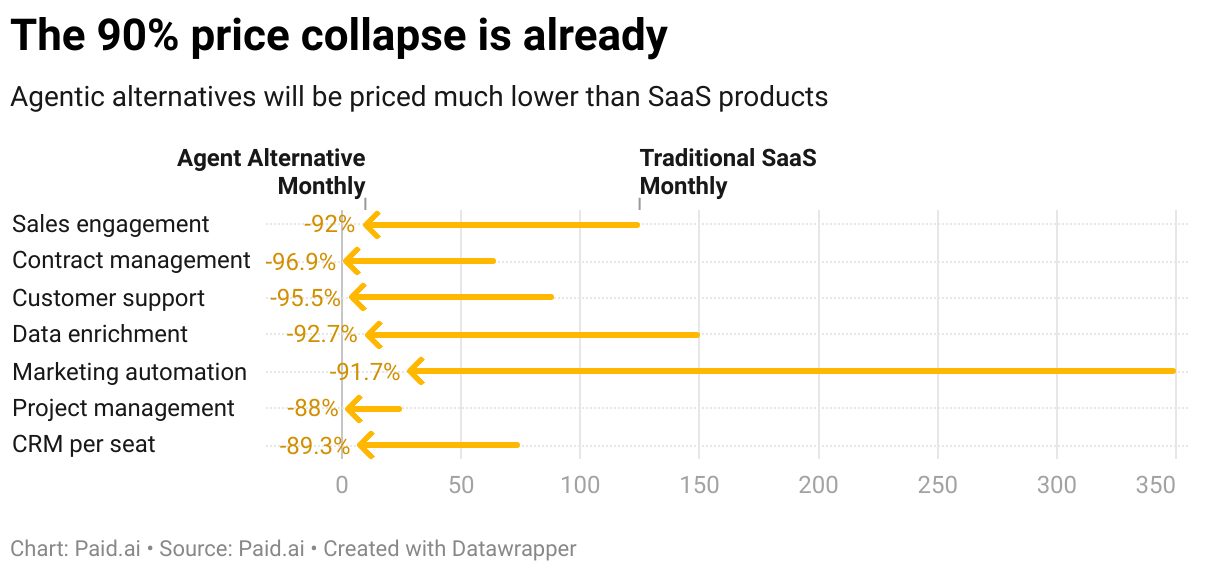
"But we have enterprise features! Compliance! Integrations!"
Sure, cool story.
Let’s look at some examples:
This moat could end up protecting you but also drowning you.
The AI-native competitor doesn't need to rebuild your features. They need to solve your customer's problem. Those aren't the same thing.
Every SaaS company has the same playbook right now:
This isn't transformation. It's decoration.
Company type | Their "AI" feature | Agent alternative | Customer satisfaction |
|---|---|---|---|
CRM | Suggested email templates | Fully autonomous SDR | 12% vs 84% |
HR software | CV keyword matching | Complete hiring agent | 23% vs 91% |
Analytics | AI insights | Answers any question instantly | 31% vs 88% |
Project management | Smart task assignment | Self-completing projects | 18% vs 79% |
Support desk | Suggested responses | Resolves tickets autonomously | 28% vs 93% |
If your AI innovation is suggested email templates, while a 5-person startup built an agent that completely replaces sales outreach, …
You get the picture.
Here's your actual choice:
Option A: Protect your existing revenue model
Option B: Blow up your own business model
There is no Option C. This is do or die.
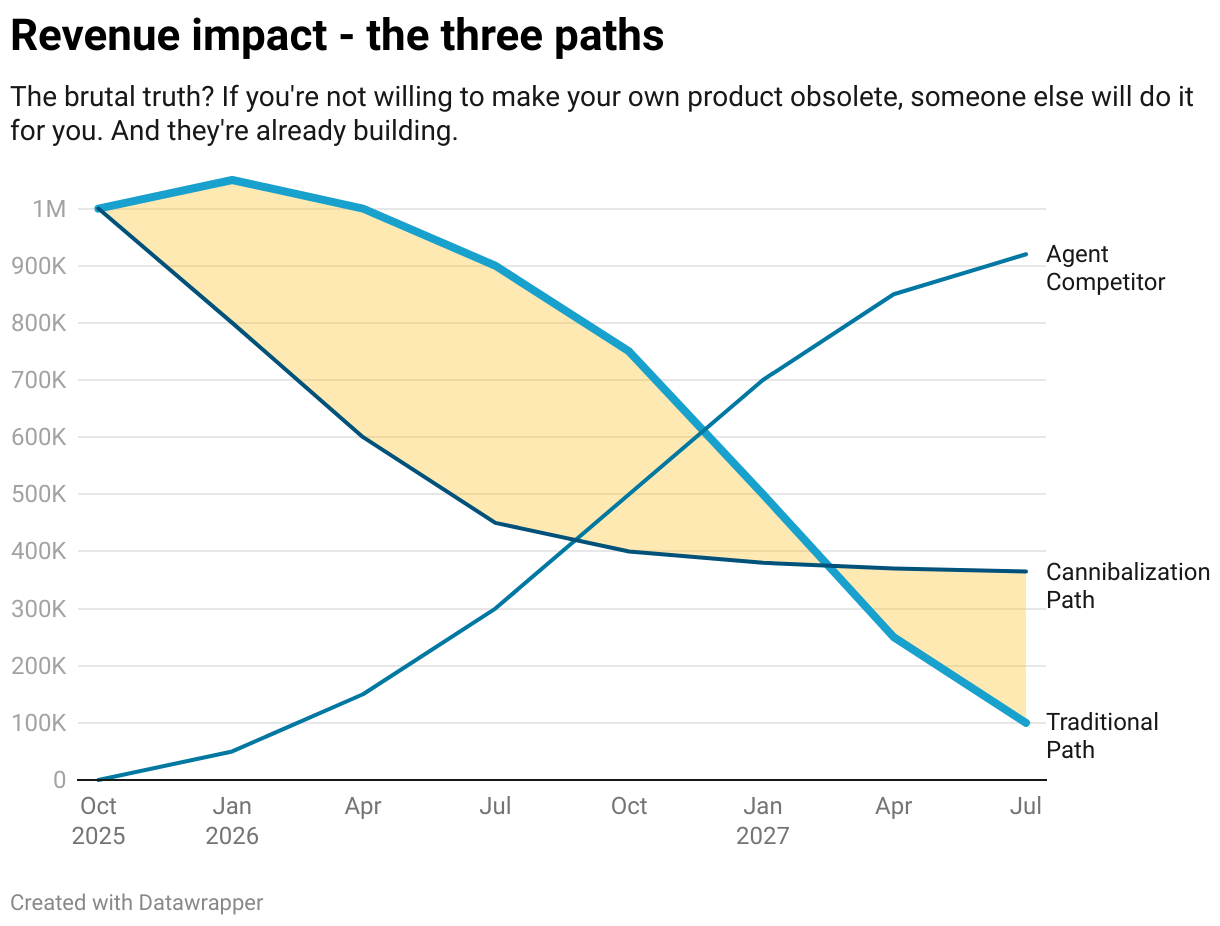
The brutal truth? If you're not willing to make your own product obsolete, someone else will do it for you. And they're already building.
Marc Benioff launched Agentforce. Not "Salesforce with AI", not "AI-powered CRM"… Agents. That replace human work. That threaten their own seat-based model.
They're charging $2 per conversation instead of $125 per user per month.
They're cannibalizing a $30 billion revenue stream. Because they know if they don't, someone else will.
Your category | Agent startups building | Funding raised | Time to feature parity |
|---|---|---|---|
If you're Calendly | 14 companies | $47M total | Already there |
If you're DocuSign | 8 companies | $31M total | 3 months |
If you're HubSpot | 31 companies | $280M total | 6 months |
If you're Monday.com | 12 companies | $67M total | 9 months |
If you're SalesSorce | 43 companies | $520M total | 12-18 months |
If you're Zendesk | 22 companies | $156M total | Already there |
I see the market split across three types: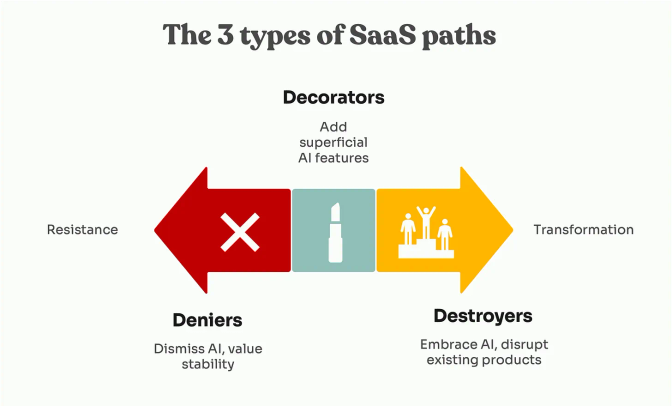
"AI is just hype. Our enterprise customers value stability."
Timeline to irrelevance: 18 months
Type 2: The Decorators (40% of market)
"Look, we added AI! There's a chatbot now!"
Timeline to irrelevance: 24 months
Type 3: The Destroyers (15% of market)
"We're building agents that make our current product worthless."
Timeline to relevance: Indefinite
Where are you on this path?
Before you panic and fire your entire product team, I have some math for you.
Your board may keep asking about protecting seat revenue and ARR, but they're asking the wrong question.
A 50-person company used to have 40 potential Salesforce seats. Maximum.
That same company now has 50,000 potential customer interactions that need handling. 10,000 documents to process. 100,000 data points to analyze.
The constraint has flipped. You're no longer limited by headcount. You're limited by imagination.
Step 1: Stop Counting Seats, Start Counting Outcomes
Salesforce didn't launch "Agentforce" as a feature, but as a shift from "per user per month" to "per conversation." That's not a pricing change!
Your version:
The beautiful part? A 50-person company might have had 3 support agents. But they have 3,000 support tickets. You just 1000x'd your addressable market.
Think in outcomes!
Step 2: Become the orchestration layer and embed in their workflows
You can't compete with agents on cost. But you have something they don't: Trust, compliance, and a decade of edge cases.
Orchestrate the agents or AI…
For example:
Think in terms of the App Store, not apps. Think Shopify, not shops….
Step 3: Price for Abundance, Not Scarcity
The old model assumed scarcity:
The new model assumes abundance:
Here's what this looks like:
Old model | New model | Revenue multiple |
|---|---|---|
10 seats x $100 = $1,000 | 10,000 tasks x $0.50 = $5,000 | 5x |
50 seats x $100 = $5,000 | 100,000 tasks x $0.20 = $20,000 | 4x |
200 seats x $100 = $20,000 | 1M tasks x $0.10 = $100,000 | 5x |
Every agent that replaces a human creates 10x more work that needs governing, monitoring, and orchestrating. Every automated workflow creates 10x more data that needs analyzing. Every AI interaction creates 10x more complexity that needs managing.
The companies that win won't be the ones that fight agents. They'll be the ones that help customers deploy 1,000 agents safely.
Accept reality now
Pick your battlefield
Burn the boats
But it's not the choice you think.
You don’t get to keep seats. You need to embrace abundance, and not defend scarcity.
Seats are finite. Tasks are infinite.
You can be Blockbuster, clutching your late fees while Netflix ships DVDs.
Or you can be Netflix, burning your DVD business to build streaming.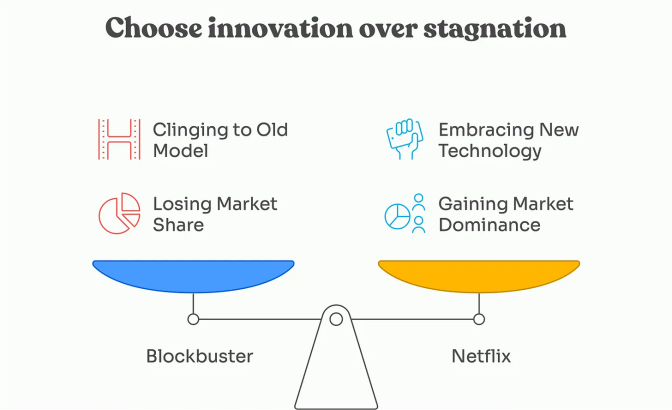
There's no middle ground. No hedging. No "wait and see."
Build the agent that kills your product. Or watch someone else do it.
Choose wisely.
What's your move?
Understand your margins and get paid for the value your agents create.

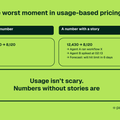


Price smarter. Protect margins. Grow revenue.